Visit The Nayaghat Ayodhya To Witness The Rich History In 2025
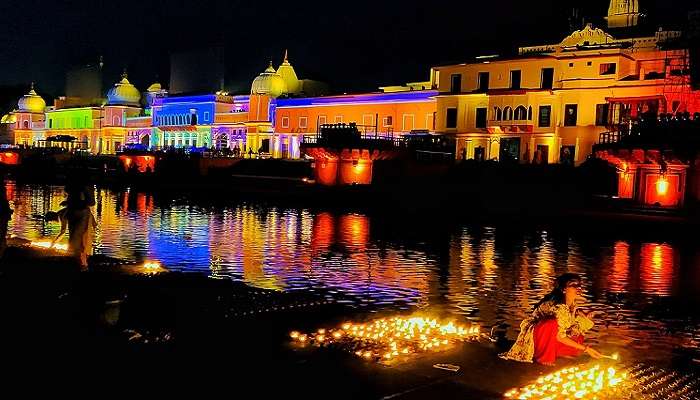
Situated near Ayodhya in Uttar Pradesh on the banks of the holy Sarayu River lies the Nayaghat Ayodhya. This ghat is a centuries-old bathing area that has been used and visited by many generations of people as a religious nathing spot to wash away sins and perform pujas for the loved ones they lost. Although “Naya” means “new,” the ghat’s origins are much more ancient. It has observed many generations participating in rites, celebrations, and holy actions. This ghat is a quiet witness to the development of this spiritual city and its solid spiritual ties with the Hindu religion.
History Of Nayaghat
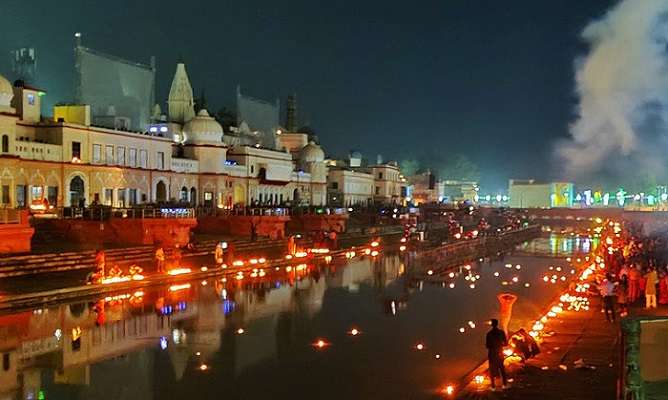
As mentioned earlier, Nayaghat stands for new stairs or a new passageway. Still, even then, this ghat has an age-old history steeped in the ancient scriptures of the Ramayana and the sacred city of Ayodhya. Not many know this, but before the construction of the Nayaghat Ayodhya, that very spot was known as the Svargadvara Ghat, which meant the door to heaven. The Svargadvara ghat is the main ghat, which spreads between the Sahastradhara and the temple of Treta Ke Thakur and is considered the first tirtha or spiritual spot established on the bank of the Sarayu River.
According to the ancient text, this holy place was established by Vishnu before his seventh incarnation as Ram. In the report of the renowned archaeologist Alexander Cunningham, he described the Svargadvara as the place where the body of Lord Ram was cremated.
Must Read: Ayodhya Ram Mandir
Places To Visit Around Nayaghat
Nayaghat Ayodhya is a magical place for anyone interested in history or looking for a peaceful, rejuvenating vacation. Here is a curated list of tourist attractions in and around Nayaghat.
1. Tulsi Udyan Garden
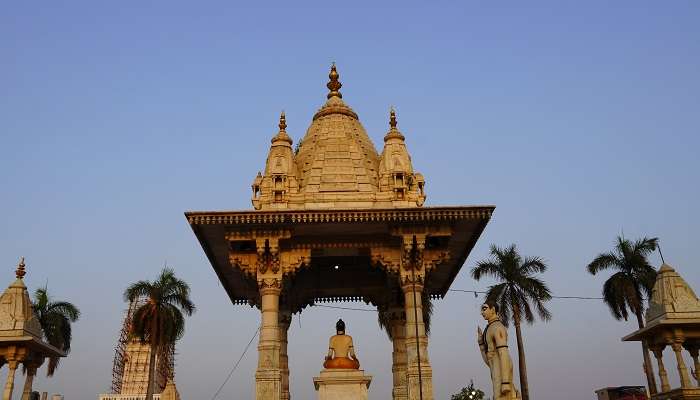
Tulsi Udyan is a garden dedicated to the saint Goswami Tulsidas Ji. Tulsi Udyan is located on Ayodhya-Faizabad Avenue, near the central town’s old bus stand. Tulsi Udyan, as the name indicates, is a garden park. It has become an installation as a memorial to the great saint poet Tulsi Das, the devotee and the author of the Epic Ramcharit Manas, additionally popularly known as Ramayana. The statue of Tulsi Das has additionally been set up beneath a superbly carved canopy within the garden. This garden was earlier referred to as Victoria Park and had the statue of Queen Victoria. Later, it was named after Goswami Tulsidas, who wrote the Ramayana. In 1960, after being named Tulsi Udyan, an idol of Tulsidas Ji was set up on the lawn. It is one of the must-visit site when visiting the Nayaghat Ayodhya.
Address: Q5XX+6M4, Tulsi Nagar, Ayodhya, Uttar Pradesh 224123
Price: NA
2. Kanak Bhawan
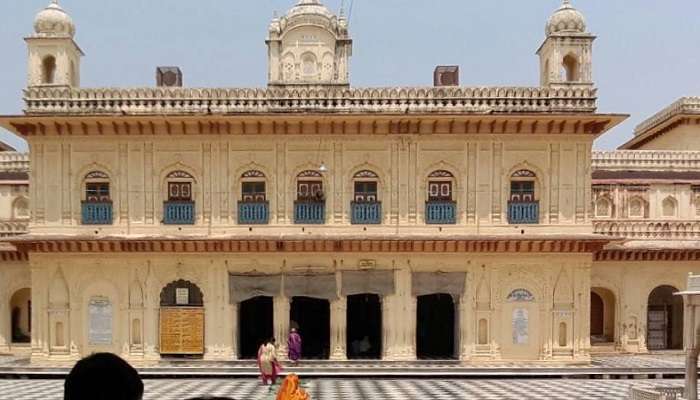
Kanak Bhawan is a temple in Ram Janmabhoomi, Ayodhya, situated towards the north-east of Ramkot. It is one of the most famous temples of Ayodhya. It is believed that this palace was gifted by Kaikeyi immediately after the marriage of Ram with Sita, and hence, it was their palace. According to mythology, Krishna rebuilt it in the Dvapar Yuga after the original Kanak Bhawan was damaged. It is believed that Vikramaditya renovated it in the medieval period. Later, it was renovated by Queen Vrishabhanu Kunwari, which is how the palace is present today. Since then, this palace has been converted into a temple dedicated to lord ram and his wife Sita. Hence, the main idols installed in the sanctum sanctorum are of Lord Ram and Lady Sita.
Address: Ayodhya, Faizabad Road, Tulsi Nagar, Ayodhya, Uttar Pradesh 224123
Price: NA
Suggested Read: Hotels In Ayodhya
3. Dashrath Mahal Ayodhya
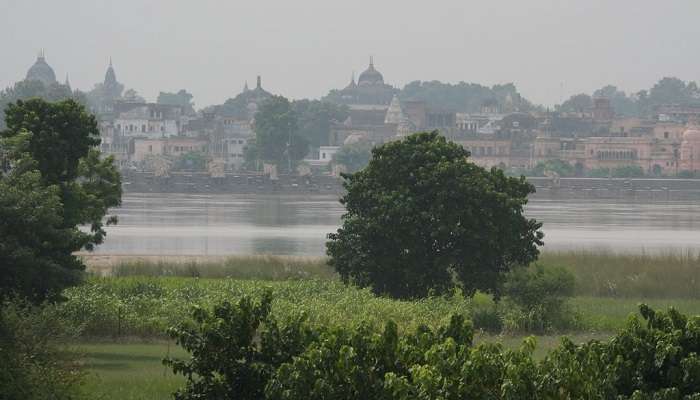
Dashrath Mahal Ayodhya is a structure with a timeless legacy. It sits in the heart of Ayodhya, a city steeped in ancient history and spirituality. This magnificent palace, also known as Bada Asthan or Badi Jagah, was once the abode of King Dashrath, the revered ruler of Ayodhya and the father of Lord Sri Ram. Located at the very site where King Dasharatha’s palace once stood, this enchanting place holds deep significance in the life of Lord Rama and his siblings. It is believed that Lord Rama spent his childhood and teenage years within these hallowed walls. Dashrath Mahal may be more diminutive than some grand palaces, but it holds an undeniable charm that draws visitors far and wide. This mahal is very close to the Nayaghat Ayodhya.
Address: Q5WX+JXH, Chowk Ayodhya Rd, Ayodhya, Uttar Pradesh 224123
Pricing: NA
Further Read: Places To Visit In Uttar Pradesh
This ghat and its surrounding structures are steeped in the history and culture of the spiritual and beautiful town of Ayodhya. As the birthplace of Lord Ram, this city holds a deep connection to Hinduism and all its devotees, who visit every year for salvation and peace. So, keep these locations in mind when planning your trip to Ayodhya.
For our editorial codes of conduct and copyright disclaimer, please click here.
Cover Image Credit: Abhimanyu7793 for wikimedia commons
Frequently Asked Questions About Nayaghat Ayodhya
What is the historical significance of Naya Ghat in Ayodhya?
The Ghat holds immense historical significance in Ayodhya, believed to be the site where Lord Rama performed the sacred ‘Jal samadhi’ ritual. The ghat’s roots trace back to ancient times, making it a revered destination for pilgrims seeking spiritual solace.
What architectural cues can visitors expect at the Naya Ghat?
Naya Ghat boasts intricately carved pillars, elegant steps, and a harmonious blend of traditional Indian design. The architecture pays homage to Ayodhya’s rich cultural heritage.
How does Naya Ghat offer a spiritual experience?
Pilgrims visit Naya Ghat to perform rituals, offer prayers, and immerse themselves in the sacred waters of the Sarayu River. The serene ambience, coupled with the gentle sounds of the flowing river, creates an atmosphere conducive to introspection and spiritual connection.
Are there specific rituals or festivities celebrated at Naya Ghat?
Naya Ghat comes alive during religious festivals, with colourful processions, spiritual gatherings, and elaborate rituals. Diwali, in particular, witnesses the entire area illuminated with Diyas, creating a breathtaking spectacle and enhancing the festive and spiritual atmosphere.
What natural elements contribute to the tranquillity of Naya Ghat?
Apart from its spiritual significance, Naya Ghat offers a serene escape amidst nature. The riverbanks are adorned with lush greenery, providing a peaceful setting for visitors to unwind and absorb tranquillity, making it a perfect spot for moments of solitude and communion with nature.
People Also Read:
Narad Ghat Man Mandir Ghat Vishram Ghat

We all have to begin somewhere. This is where I start and I hope that my writings encourage you to begin. To new beginnings and conquering new places!











